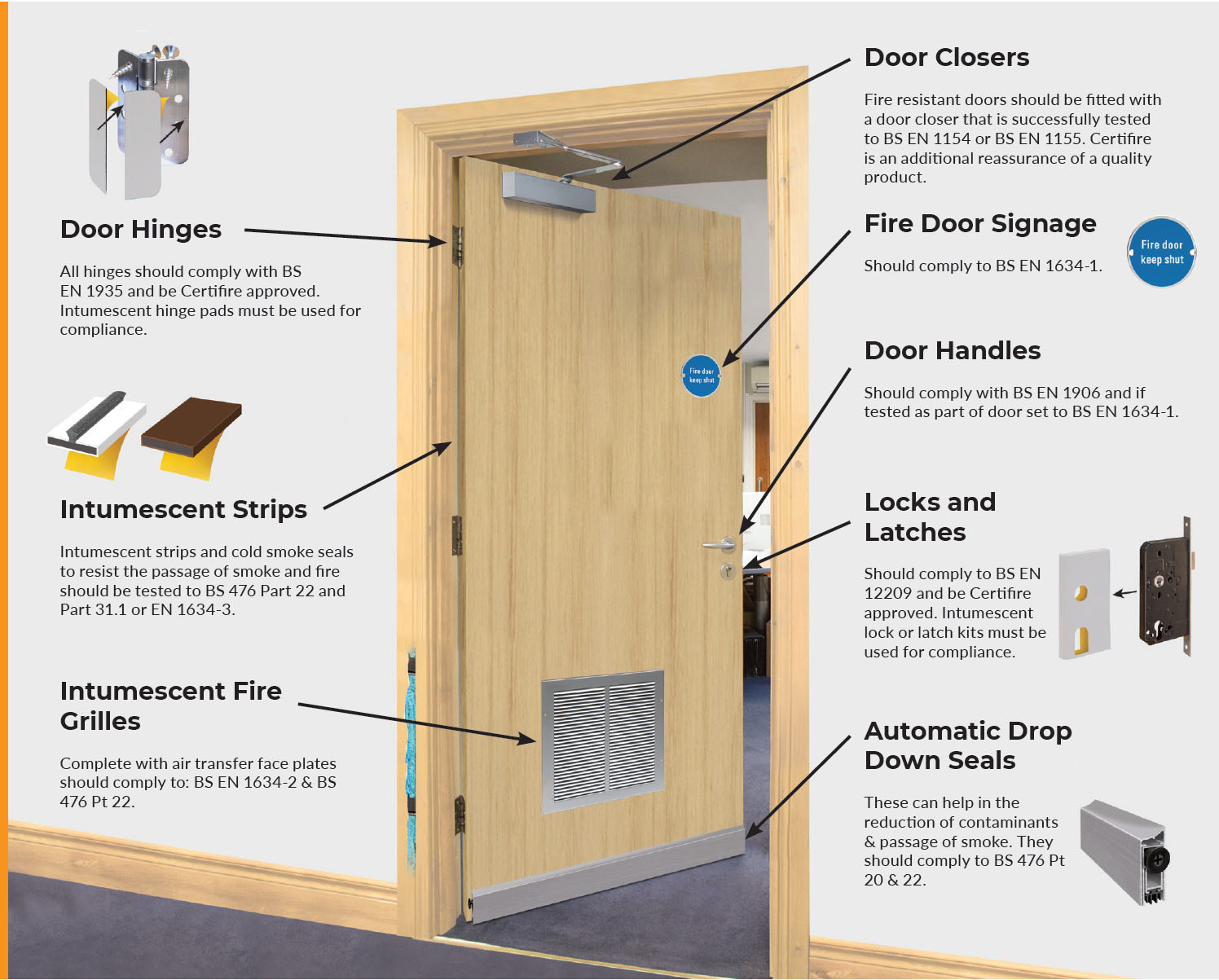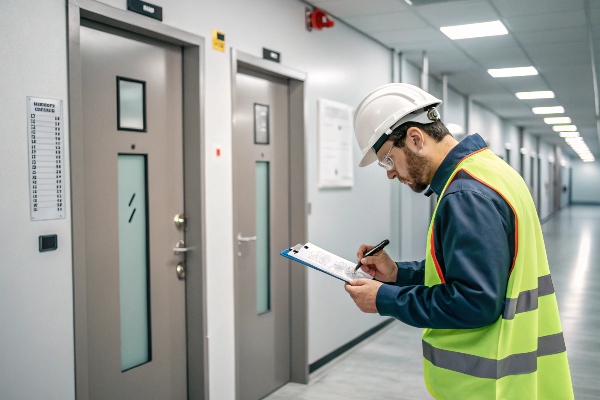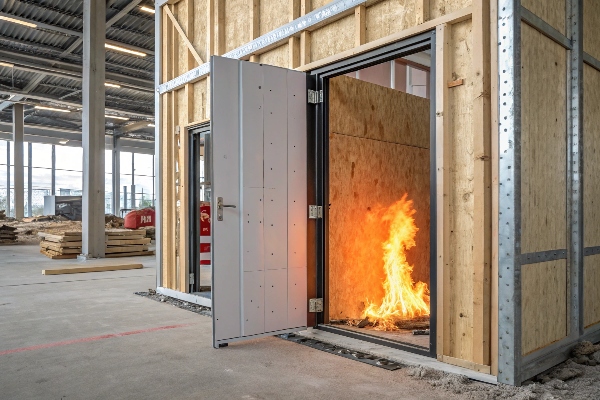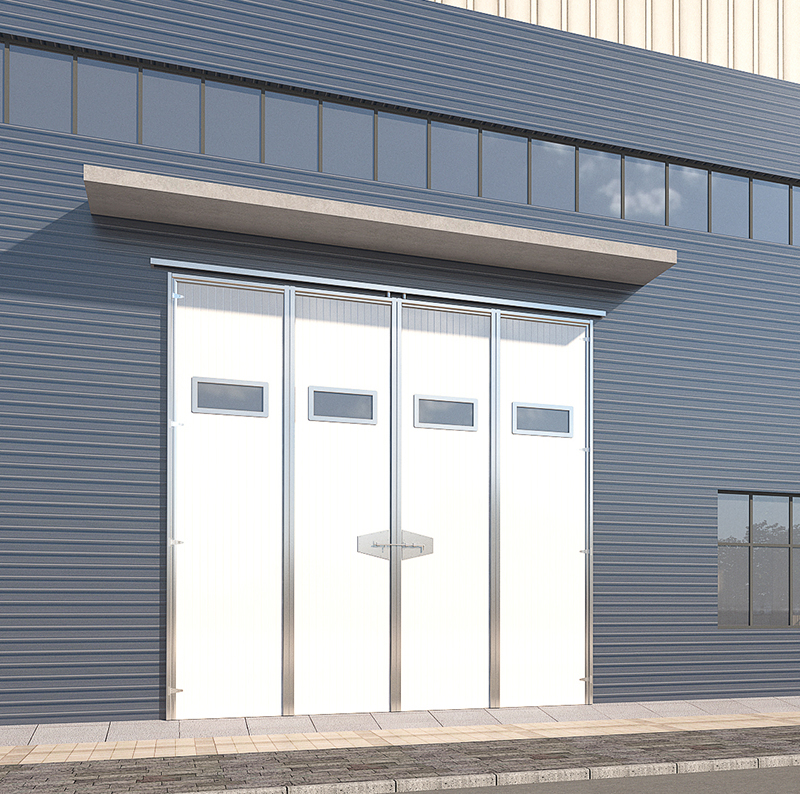Fire safety is crucial in any building. Ensuring that fire doors meet international standards can save lives and property.
Understanding the compliance of fire doors is essential for maintaining safety and meeting legal requirements.

It's important to know how to verify and maintain the standards of fire doors to ensure maximum protection.
How to check if a fire door is compliant?
Ensuring your fire door meets standards is simpler than you think.
You can verify compliance by checking certifications and inspecting key features of the door.

Knowing how to check compliance helps you maintain safety and adhere to regulations.
Steps to Verify Fire Door Compliance
To ensure your fire door is compliant, follow these steps:
-
Check for Certification Labels
- Look for labels from recognized bodies like UL, NFPA, CE, or BS.
- These labels indicate that the door has been tested and meets specific standards.
-
Inspect the Door’s Construction
- Ensure the door is made of fire-resistant materials.
- Verify that it has proper seals to prevent smoke and fire from passing through.
-
Examine the Door Hardware
- Check that hinges, handles, and locks are fire-rated.
- Proper hardware ensures the door functions correctly during a fire.
| Step | Action | Purpose |
|---|---|---|
| Certification Labels | Look for UL, NFPA, CE, or BS labels | Confirm the door has been tested and approved |
| Door’s Construction | Check materials and seals | Ensure fire and smoke resistance |
| Door Hardware | Inspect hinges, handles, and locks | Guarantee functionality during emergencies |
By following these steps, you can confidently verify that your fire doors comply with international standards.
What must a fire door have to be compliant?
Knowing the requirements of a compliant fire door ensures optimal safety.
A compliant fire door must have proper certification, materials, and installation to meet safety standards.

Ensuring these features are present guarantees the door performs effectively in emergencies.
Essential Features of a Compliant Fire Door
A fire door must include several key features to ensure compliance:
-
Certification and Labels
- Must display certification from recognized authorities.
- Labels provide proof of compliance and testing.
-
Fire-Resistant Materials
- Constructed from materials like steel or solid wood.
- These materials can withstand high temperatures for a specified time.
-
Proper Seals and Gaskets
- Seals prevent the spread of smoke and fire.
- Gaskets must be intact and functional.
-
Appropriate Hardware
- Hinges and locks should be fire-rated.
- Hardware must allow the door to operate smoothly during a fire.
-
Installation Standards
- Doors must be installed according to manufacturer guidelines.
- Proper installation ensures the door functions as intended.
| Feature | Description | Importance |
|---|---|---|
| Certification Labels | Display from UL, NFPA, CE, or BS | Validates compliance and testing |
| Fire-Resistant Materials | Made from steel or solid wood | Provides durability and heat resistance |
| Seals and Gaskets | Prevent smoke and fire spread | Maintains compartment integrity |
| Fire-Rated Hardware | Hinges and locks designed for fire use | Ensures door operates during emergencies |
| Installation Standards | Follow manufacturer guidelines | Guarantees proper door functionality |
These features work together to ensure that the fire door performs effectively, providing safety and compliance.
How do I know if a door needs to be fire rated?
Determining whether a door needs to be fire rated is essential for building safety.
Identifying the need for a fire-rated door depends on building codes and the specific use of the space.

Understanding these factors helps you make informed decisions about door installations.
Assessing the Need for Fire-Rated Doors
To know if a door needs to be fire rated, consider the following:
-
Building Codes and Regulations
- Local building codes often specify where fire-rated doors are required.
- Compliance with these codes is mandatory for safety and legal reasons.
-
Type of Building and Usage
- Buildings like hospitals, schools, and commercial spaces typically require fire-rated doors.
- High-occupancy areas need additional protection to ensure safety during emergencies.
-
Location Within the Building
- Doors in corridors, stairwells, and between different fire zones must be fire-rated.
- These locations are critical for preventing the spread of fire and smoke.
-
Occupancy Load
- Buildings with a higher occupancy load may require more stringent fire safety measures.
- Fire-rated doors help manage the safety of a larger number of people.
-
Existing Safety Features
- Evaluate the current safety features of your building.
- Upgrading to fire-rated doors can enhance overall safety if existing measures are insufficient.
| Factor | Consideration | Impact |
|---|---|---|
| Building Codes | Local regulations | Ensures legal compliance and safety |
| Building Type | Hospitals, schools, commercial spaces | Tailored safety measures for specific uses |
| Location in Building | Corridors, stairwells, fire zones | Prevents spread of fire and smoke |
| Occupancy Load | Number of occupants | Enhances safety for larger populations |
| Existing Safety Features | Current safety measures | Identifies need for upgrades |
By evaluating these factors, you can determine whether a fire-rated door is necessary for your specific situation.
What are the regulations for fire door frames?
Understanding regulations for fire door frames is crucial for complete fire safety.
Fire door frames must meet specific standards to ensure they function correctly during a fire.

Knowing these regulations helps in selecting and installing frames that provide maximum protection.
Compliance Requirements for Fire Door Frames
Fire door frames must adhere to several regulations to ensure they perform effectively:
-
Material Standards
- Frames should be made from fire-resistant materials such as steel or treated wood.
- These materials help maintain the integrity of the frame during a fire.
-
Fire Rating Compatibility
- The frame’s fire rating must match that of the door.
- Consistent ratings ensure that both the door and frame provide adequate protection.
-
Installation Guidelines
- Frames must be installed according to manufacturer specifications.
- Proper installation is essential for the frame to function correctly in an emergency.
-
Sealing and Joints
- All joints and seams should be sealed with fire-resistant materials.
- Sealing prevents smoke and fire from passing through gaps around the frame.
-
Hardware Integration
- Frames must accommodate fire-rated hardware like hinges and locks.
- Proper integration ensures that the hardware performs as intended during a fire.
-
Structural Integrity
- Frames should be securely anchored to the building structure.
- Strong anchoring prevents the frame from warping or collapsing under fire conditions.
| Regulation | Requirement | Purpose |
|---|---|---|
| Material Standards | Use fire-resistant materials | Maintain frame integrity during fire |
| Fire Rating Compatibility | Match frame rating with door rating | Ensure consistent protection |
| Installation Guidelines | Follow manufacturer specifications | Guarantee proper frame functionality |
| Sealing and Joints | Seal with fire-resistant materials | Prevent smoke and fire from spreading |
| Hardware Integration | Accommodate fire-rated hardware | Ensure hardware functions correctly |
| Structural Integrity | Securely anchor frames | Prevent warping or collapse under fire |
Adhering to these regulations ensures that fire door frames provide the necessary protection and comply with international standards.
Conclusion
Ensuring fire doors comply with standards is vital for safety and legality.


